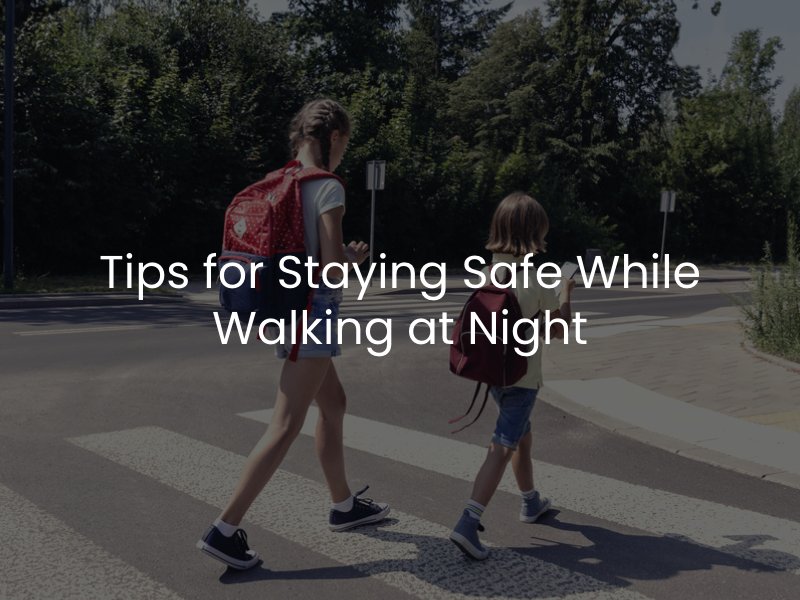Is it Dangerous to Walk at Night?
Walking at night is something we have all probably done and is not in and of itself inherently dangerous. However, walking at night does pose more risks than walking during the daytime or when visibility is high. Here, we want to discuss some of the risks associated with nighttime walking as well as some of the steps you can take to help improve your safety if you are out for an evening stroll.
Visibility Issues and Safety Concerns
Nighttime driving is certainly more challenging, which means it’s more challenging for pedestrians to remain safe on or around the roadway. Some of the main risks associated with evening or night walking include:
- Reduced visibility. With dim lighting or complete darkness, it becomes much harder for both pedestrians and drivers to see each other. This increases the risk of pedestrian accidents, particularly at intersections and crosswalks. Hazards like potholes, debris, or uneven sidewalks can also be easily overlooked, causing trips and falls.
- Increased reaction time. Drivers may not have sufficient time to react to pedestrians crossing the street due to limited visibility, particularly when pedestrians wear dark clothing or crossroads without marked crosswalks.
- Distraction and impairment. Drivers under the influence of alcohol or distracted by their phones pose a greater risk at night. Walking near intoxicated or inattentive drivers could lead to severe accidents.
Potential Crime at Night in California
There are certainly going to be areas where crime is more prevalent at night, no matter what city you’re in, whether that be Sacramento or somewhere else. There is crime everywhere, but that does not mean a place is inherently unsafe. However, we all have to be smart about our safety and avoid the following:
- High-crime areas. Sacramento and other California cities experience higher crime rates in certain areas, particularly after dark. Walking alone in unfamiliar neighborhoods or isolated areas exposes individuals to potential robberies, assaults, or other violent crimes.
- Opportunistic crime. Thieves often target pedestrians carrying visible valuables like phones or wallets. Wearing headphones or being absorbed in your phone can make you less aware of your surroundings, increasing vulnerability to muggers.
- Isolated paths. Parks and trails can be serene, but isolated walking paths may make you susceptible to opportunistic attackers or those lying in wait. Always use well-lit routes and avoid secluded areas at night.
Tips for Staying Safe While Walking at Night
If you need to take a stroll at night, there are various steps you can take to help increase your safety:

- Increase your visibility. Wear light-colored or reflective clothing, carry a flashlight, or wear a headlamp to make yourself more noticeable to drivers. Using well-lit sidewalks and crosswalks can also enhance your visibility.
- Stay alert. Avoid distractions like texting or listening to music at high volumes. Stay aware of your surroundings and any approaching vehicles.
- Stick to well-populated areas. Walk along streets where there are other pedestrians or cars around. Criminals are less likely to target individuals in busy areas.
- Travel in groups. If possible, walk with a friend or family member. There is safety in numbers, and a companion can help you avoid danger or seek assistance in case of an emergency.
- Vary your routes. Avoid taking the same path every night if you walk regularly. Varying your route can help prevent potential attackers from predicting your patterns.
- Trust your instincts. If something feels off in the slightest degree or makes you uncomfortable, change direction or find a safe, well-lit place to wait or seek help.
- Carry a safety device. Carry a personal alarm, whistle, or pepper spray to deter attackers and alert others nearby.